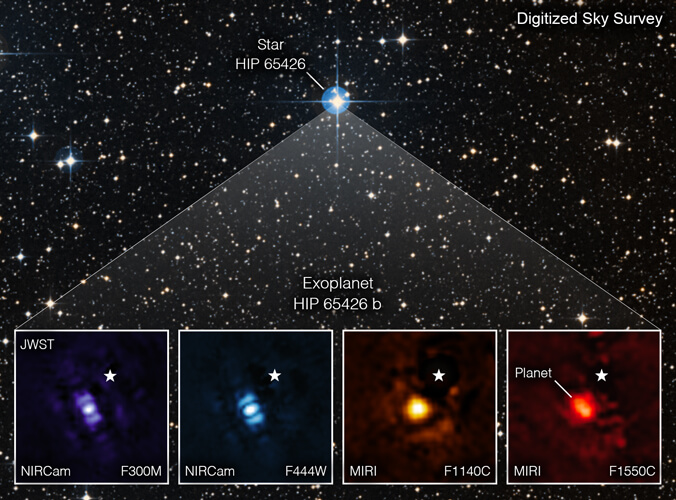
NASA’s flagship James Webb Space Telescope (JWST) has unveiled its first direct image of a planet outside the Solar System, the exoplanet HIP 65426 b.
“Astronomers have been waiting for over two decades for JWST to come to fruition,” said the University of Hawaiʻi Institute for Astronomy (IfA) professor Michael Liu, a member of the JWST Early Release Science program studying this exoplanet. “It is so gratifying to see the first data from this telescope happening and so exciting to think about what is to come with future JWST observations.”
Researchers originally discovered HIP 65426 b in 2017 using the European Southern Observatory’s Very Large Telescope in Chile, using images taken at short infrared wavelengths (colors of light). With a mass of 6–12 times that of Jupiter, this planet is considered a gas giant, meaning it does not have a solid surface and is not habitable.
“The new capability of JWST is that the planet can be observed in wavelengths that cannot be detectable from the ground, namely the cool infrared emission,” Liu explained. “This allows us to measure precisely the total amount of energy being emitted by the planet, which helps tell us about its physical state.”
UH discovery among JWST’s first images
In July, NASA and The White House released the historic space telescope mission’s inaugural image of an enormous cluster of galaxies previously pinpointed by IfA researchers nearly 20 years ago. Tagged as a potentially extremely massive cluster by the IfA team, SMACSJ 0723 was confirmed soon thereafter through observations performed with the European Southern Observatory’s 3.5-meter telescope in Chile. SMACSJ 0723, is an exceptionally massive concentration of galaxies including the faintest objects ever observed in the infrared.
Ground-breaking UH-designed sensors
Technology developed and tested at IfA and on Maunakea are behind JWST’s ability to gaze deeper into space than was previously possible. Sixteen near-infrared sensors known as HAWAII-2RGs are part of JWST’s science instruments, enabling it to capture near-infrared light from deep space, far surpassing the capability of NASA’s Hubble Space Telescope.
These sensors are the culmination of years of research and development by IfA scientists and engineers. Early prototypes were developed and tested by UH astronomers Don Hall, Klaus Hodapp, Doug Simons, along with IfA instrumentation engineer Shane Jacobson.

